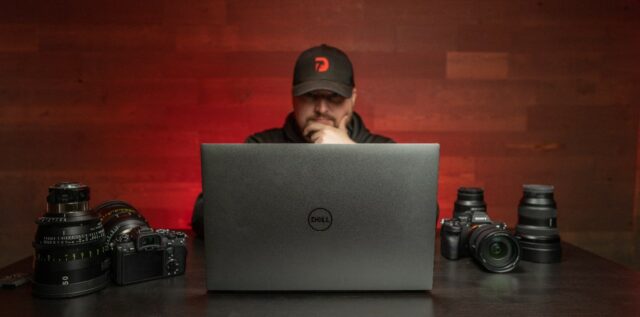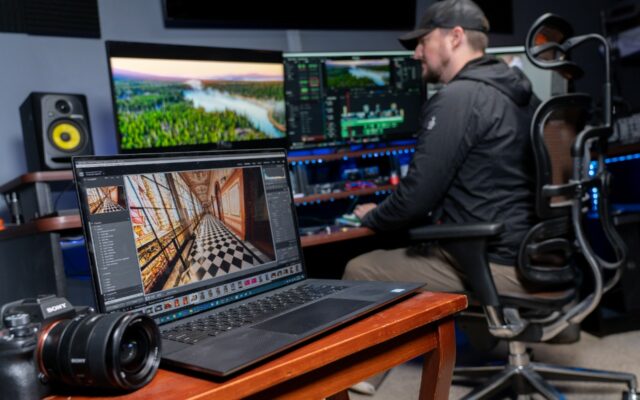Andrew ‘Drew’ Geraci is an award-winning photographer and cinematographer who has been in the industry for over 15 years. Passionate about visual storytelling and creating brilliantly colored and high impact HDR time-lapse productions, Drew founded District 7 Media as a second act following nearly a decade of service in the U.S. Navy as a Mass Communications Specialist.
As a #DellInsideCircle member, Dell Precision workstations and displays are crucial to bringing Drew’s visual story-telling to life. I recently sat down with him to discuss the role of technology for creators.
Matt: Hi Drew! The pandemic caused quite a bit of disruption this past year. What projects have kept you occupied recently?
Drew: The pandemic nearly crippled my business as more than a dozen of my contracts and pre-scheduled jobs fell through. Thankfully, as a creative, I used this time to explore other outlets and focus on professional development – from HDR workflows and fluid-motion painting to VR implementation and high-resolution content creation. Towards the end of the year, I was able to utilize a few of these newly honed skills on various projects. For the DC Metro Station, I created 8K HDR content for an ad campaign encouraging people to ride the metro again. I also worked on a feature film that leverages 8K VR, and I was able to edit it on my Dell Precision 5750.

Tell us more about how switching to the Precision 5750 impacted your workflow? Any interesting observations?
When I began working with higher resolution content, I quickly realized that I needed more processing power. My current desktop workstation was unable to handle the content workload until I upgraded to the new Nvidia RTX GPU which improved my workflow considerably. When I could travel safely again, I took the Precision 5750 with me. It allowed me to handle full 8K VR stitching and rendering on the go while filming for a feature film’s VFX department. I was able to deliver content to the director that enriched his production and allowed us to create something that has never been created before.
Do you have any tips for other cinematographers who are just starting out shooting in 8K?
The best advice I can give to anyone who is working with 8K+ resolution is:
- Invest in a system that can handle 8K footage. The last thing you want is to be in a non-linear editing system and not be able to achieve pure 1:1 playback of your raw content.
- Invest in a network-attached or direct-attached storage device to maintain your 8K footage. I recommend at least 32TB to start with. If you’re a professional, aim for 120TB+ as you’ll likely fill that up quickly.
What are your technology must-haves for post-production?
For post-production, keeping up with the latest GPUs, CPUs, monitors, and storage is a must. I typically upgrade my computer components at least every 12-18 months. This helps me to keep up with emerging technologies, like higher-resolution content. The last thing I want is a slowdown in my workflow.

What do you love most about shooting time-lapse and what makes it challenging?
The thing I love most is that you don’t always know what you’re going to capture on film. It’s a mystery most of the time, especially when dealing with sunset and sunrise colors. Most of the time, I find small events happening within my time-lapse that I wouldn’t have noticed otherwise. For example, one time I was filming night skies in the desert. When I brought the footage back into post, I was able to see hundreds, if not thousands, of small wildlife running around the base of my foreground. It was happening in a complete blanket of darkness and it wasn’t until I got the footage back that I saw these creatures running around doing their nightly routine. It was remarkable. The most challenging aspect to time-lapse isn’t necessarily setting up the shot but waiting for the shot to finish. You can be sitting at your camera for hours if not days trying to get just 20 seconds of footage for a film or commercial. If anything happens to the camera during that period, you have to start all over again.
Which project are you most proud of and why? And any additional “bucket list” items or goals you’d like to achieve in future?
The project I’m most proud of is the House of Cards intro for David Fincher and Netflix. It was my first professional Hollywood-level production and ultimately led me to pursue time-lapse as a full-term career. Before COVID hit, I also worked with Steven Spielberg to film the credit/title sequence for his upcoming film. It was a real dream come true.
And finally, we know that you love technology – what are your three favorite tech gadgets?
My top three gadgets are my Dell Precision 5750 workstation, my Sony A1 camera and the Remarkable writing tablet.
